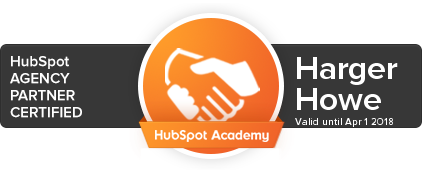Have you ever wondered why it seems difficult to find the perfect candidate for an open requisition? It seems like you have all the job requirements listed out. You know that you’ve written an exciting job description. It’s out there. What more do job seekers want?
Well, the answer might be simpler than you think. You are thinking about recruiting from your perspective when you may really want to start thinking about it from your ideal job seeker’s vantage point. If you want to be truly successful on a consistent basis, it’s important for you to develop Job Seeker Personas so that you know how to put the right job content in front of the right candidate at the right time. After all, targeting and exciting the wrong candidates or reaching the right candidates at the wrong time will result in low application rates and ultimately wasted budgetary dollars.
So what are Job Seeker Personas?
You may have heard about Hubspot’s Buyer Personas, which are, “semi-fictional representations of your ideal customer based on market research and real data about your existing customers.” Job Seeker Personas are the same, except they are not based on customers. So therefore Job Seeker Personas are semi-fictional representations of your ideal candidate based on market research and real hiring data about your existing workforce.
Of course one key part to note here is that they are semi-fictional. While we encourage you to do you research in your applicant tracking system or other historic hiring methods, don’t pick one person and create them as the template. Instead, try and find trends that are common among your best hires.
How to Get Started
Name your Job Seeker Persona
This may seem silly, but the first way to start building a Job Seeker Persona is by humanizing them with a name. Choose something fun for your whole team like Job Seeker Jenny.
Input Their Job Title
Depending on the role you are hiring for, Job Seeker Jenny might be employed under several possible titles or roles. For instance, let’s say you are looking for an Administrative Assistant. Well, the term Administrative Assistant might be your first idea, but Jenny might also list herself as an Administrative Associate or even a Secretary. Make sure to include all possible titles in your Job Seeker Persona.
Consider What the Role Must Do
Every job is measured in some way. Some ways that employee performance is measured include monetary return, productivity, teamwork or even in the case of recruiters, the amount of jobs that they fill. Find out the function of the ideal job seeker and input that into the profile.
Think About How They Do Their Jobs
This question has to do with the tools or methods the job seeker uses to do effective work on the job. Are they using list-making tools or organizational software? What and where are they finding effective resources to complete the demands of their job?
Hammer Out Who This Person Works For and Who Works For Them
Again, this question might have multiple answers. Does this person have a direct report and an overarching department head? Who does your ideal job seeker typically work for within a company? And, on the other end of things, does your ideal job seeker have people reporting to them? Who are they?
Job Sector and Company Size
These questions will be largely dictated by your company sector and size. Ideally, the candidate you are looking for will want to work for a company of your size and within your industry. One more thing to focus on here is why they choose to work for a company that is your size and why they want to work in your company’s sector.
Job Description
Don’t just think about the typical job description – instead, think about all of the daily duties that are a part of this job seeker’s life (even little ones that seem insignificant).
*Pro-tip: really taking the time to outline responsibilities will make it easier for you to write more effective job descriptions that will attract the right candidates.
Job Seeker Aspirations and Road Blocks
What does this job seeker want out of a new role? What do they want to achieve? And, conversely, what’s standing in the way of their success? Accessing painful roadblocks will provide you with a way to market solutions to this job seeker.
Where and How Do They Learn?
Take the time to think about what your ideal job seeker uses to find new information for their job, to enhance their knowledge base and just for fun. Are they reading an online magazine to keep up with news? Are they researching companies using a particular search term or vetted service? Are they subscribing to particular industry blogs? Are they hanging out socially on Instagram? These questions will become valuable when it comes to ad placement and your inbound recruitment marketing efforts.
How Do They Communicate?
When it comes to actually doing the job, how does your job seeker work? Are they an email aficionado? Are they more of an in person networker? Do they respond to texts? Chances are the way they communicate at work will speak directly to how they behave in their “natural habitat.”
Once you’ve isolated all the answers to these questions you will have a fully fleshed out idea of exactly who you are looking for and how to market to them. While it seems like a lot of information to gather, consider that Job Seeker Personas can evolve.
Start with the information you have and add more as you learn more. Great ways to learn more include staff surveys, interviewing people who fit the job seeker profile, looking for commonalities among applicants (even if they weren’t selected). Each piece of information that you can pull into your persona will make it easier to do your job as a recruiter more effectively.
--
Creating personas is an important part of a comprehensive inbound recruitment marketing strategy, but there’s so much more to learn! Want to dive in? Download our new E-Book, The Job Seeker’s Journey.











